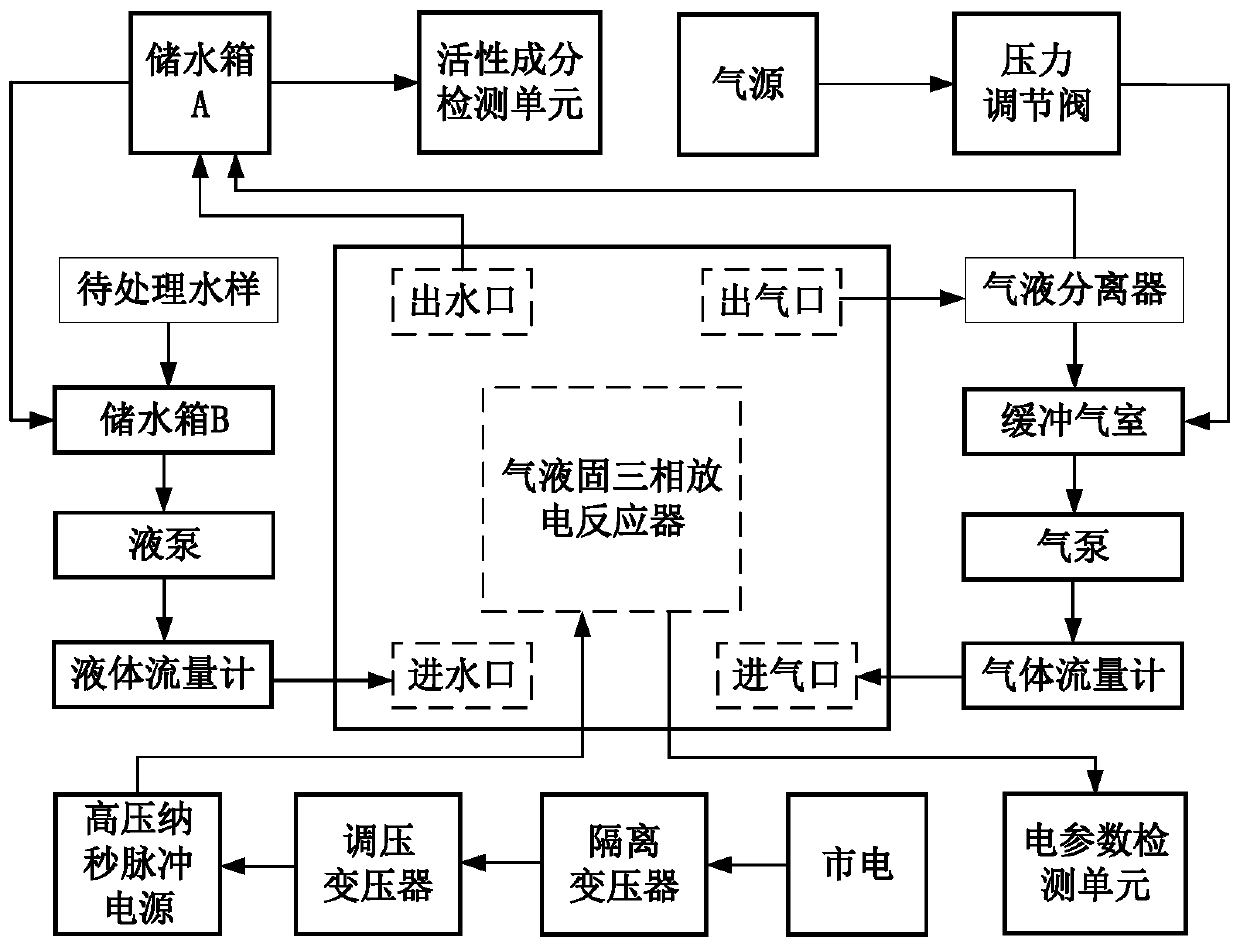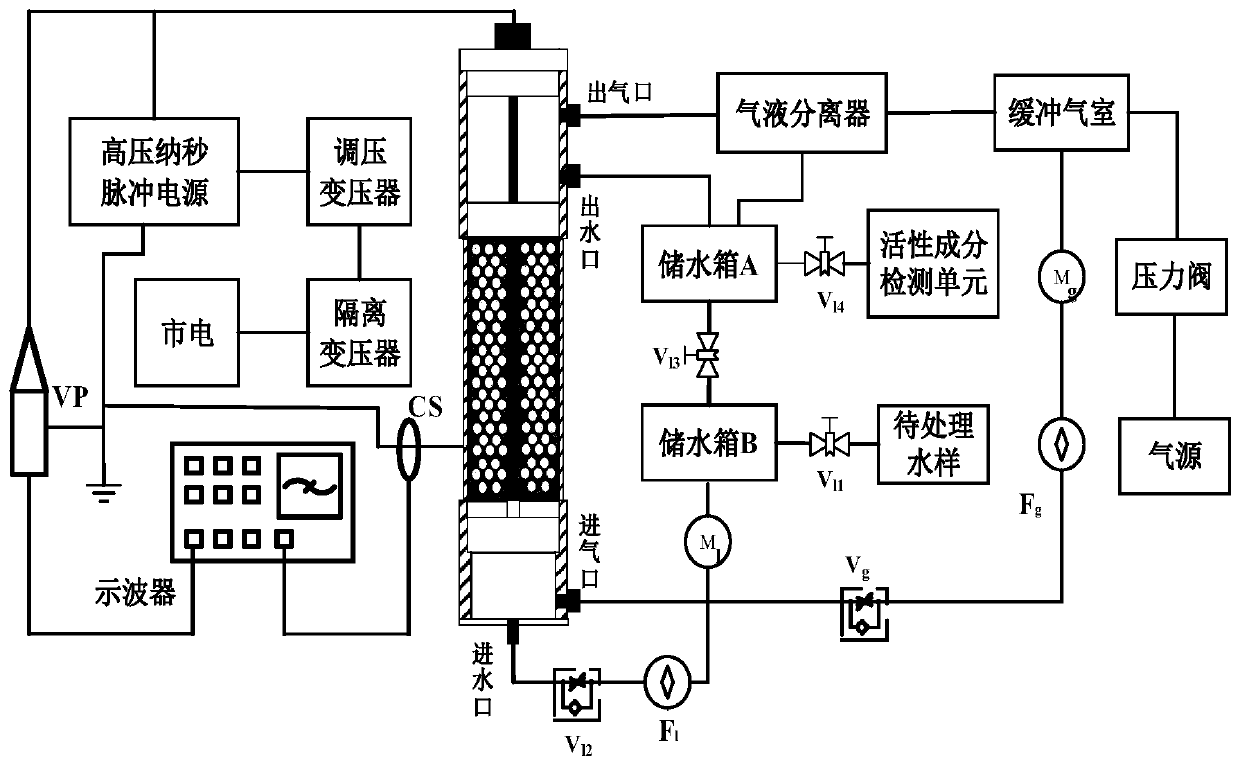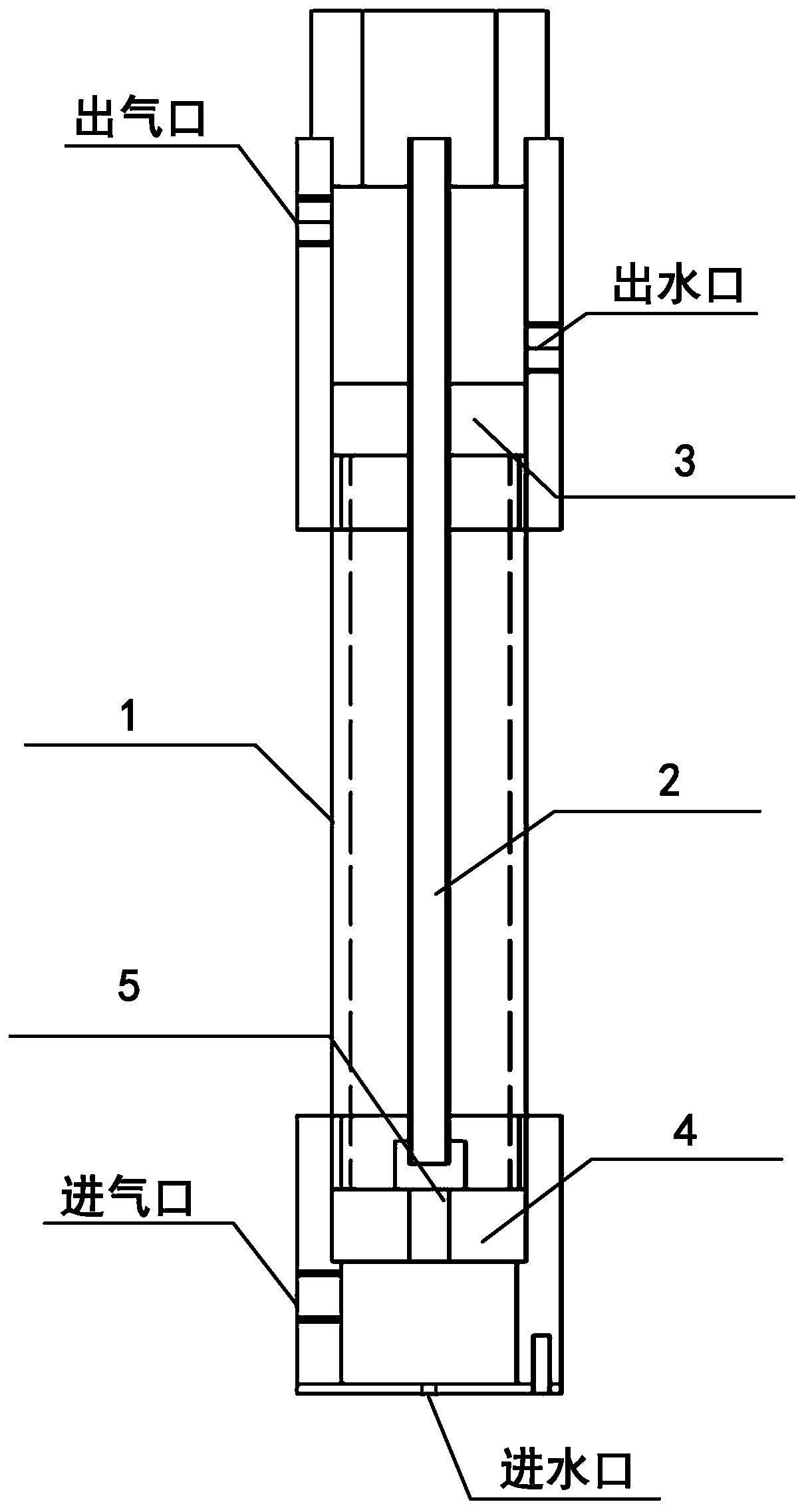Device and method for gas-liquid-solid three-phase pulse discharge electrical characteristic research experiment
A technology of pulse discharge and electrical characteristics, applied in chemical instruments and methods, special compound water treatment, magnetic/electric field water/sewage treatment, etc., can solve problems such as complex overall structure
- Summary
- Abstract
- Description
- Claims
- Application Information
AI Technical Summary
Problems solved by technology
Method used
Image
Examples
Embodiment 1
[0063] like figure 2 As shown in the structure diagram of the experimental platform, the platform realizes the gas-liquid-solid three-phase high-voltage pulse discharge water treatment experimental system. The voltage at the output end of the high-voltage nanosecond pulse power supply is positively correlated with the voltage at the input end. Rotating the knob of the voltage regulating transformer can change the voltage at the input end of the high-voltage nanosecond pulse power supply, thereby changing the voltage at the output end of the high-voltage nanosecond pulse power supply.
[0064] like figure 2 As shown, the high-voltage nanosecond pulse power supply provides high-voltage pulse excitation for the discharge reactor, the high-voltage voltage probe VP (North Star: PVM-5) collects the voltage at the end of the gas-liquid-solid three-phase discharge reactor, and the high-frequency current probe CS (Pearson: 6595 ) to collect the current at the discharge reactor end, ...
Embodiment 2
[0074] Example 2: Analysis of the correlation characteristics between energy and active ingredients under different breakdown voltages:
[0075] Breakdown voltage definition:
[0076] In the gas-liquid-solid three-phase high-voltage nanosecond pulse discharge reactor, the high-strength electric field will break down the medium between the two electrodes to form a discharge channel. Once the discharge channel is formed, the load of the reactor decreases instantly, and the current flowing through the discharge reactor rises suddenly. Due to the limited power supply, the power supply voltage at the end of the discharge reactor drops suddenly. By observing the voltage and current waveforms at the end of the discharge reactor on the oscilloscope, it is judged whether a breakdown has occurred. When the voltage amplitude on the discharge reactor suddenly rises and the current amplitude suddenly drops, it is considered that the medium between the two electrodes is broken down under a...
Embodiment 3
[0104] Example 3: Exploring the law of critical breakdown voltage and the generation characteristics of active ingredients under different solution conductivity
[0105] The conductivity of the solution is an important factor affecting the critical breakdown voltage and the generation characteristics of the active ingredient. Therefore, it is necessary to explore the law of the critical breakdown voltage and the generation characteristics of the active ingredient under the condition of no solution conductivity. Keep the irrelevant variables such as water content, total gas-liquid flow, and discharge time constant, and change the conductivity of the solution each time. The experiment explores the law of critical breakdown voltage and the generation characteristics of active ingredients under the condition of no solution conductivity.
[0106] The preparation methods of different conductivity solutions are as follows:
[0107] Determine the required range of conductivity, and ev...
PUM
| Property | Measurement | Unit |
|---|---|---|
| diameter | aaaaa | aaaaa |
| particle diameter | aaaaa | aaaaa |
Abstract
Description
Claims
Application Information
 Login to View More
Login to View More - R&D
- Intellectual Property
- Life Sciences
- Materials
- Tech Scout
- Unparalleled Data Quality
- Higher Quality Content
- 60% Fewer Hallucinations
Browse by: Latest US Patents, China's latest patents, Technical Efficacy Thesaurus, Application Domain, Technology Topic, Popular Technical Reports.
© 2025 PatSnap. All rights reserved.Legal|Privacy policy|Modern Slavery Act Transparency Statement|Sitemap|About US| Contact US: help@patsnap.com



